Lupine Publishers| Agriculture Open Access Journal
Abstract
Keywords: Awareness; Perception; Consumers; Organic-Food
Introduction
This preference is particularly strong with those with a higher education, and those of a younger demographic. Most of who are under age 35 choose organics when possible but price has been found to be the primary reason that consumers preferred nonorganic vegetables. The perceived shortage of commodities and consumers’ willingness to pay premium prices for quality provides opportunities for farmers and traders to increase production, processing and marketing of quality commodities [8]. In a study by FAO [9]. The reasons consumers frequently give for not eating more organic vegetable include traditional and individual indifference, high prices and variable availability, their taste, quality and safety. It is a known fact that consumers want foods that are readily available, affordable, convenient to acquire and prepare, socio-culturally appropriate, safe and healthy. Despite the increased awareness of the importance of organic vegetables to healthy living, low intake of this vegetable has been a widespread characteristic among Nigerians [6]. Though studies have shown that many consumers prefer organic foods to conventional foods, price is often a major factor that influences their behavior as organic vegetables are especially price sensitive given its daily consumption [2,10]. In spites of the importance of organic vegetables to human health and the environment, there is still a short fall in consumption in the country and which has reduced the availability of organic vegetables in mainstream markets, thus preventing the market from expanding. Similarly, many Nigerian farmers are still hesitant to adopt the production of organic vegetables in large scale due to inadequate information on the consumers’ willingness to pay. This research therefore intends to: (a) Identify the consumers’ socioeconomic characteristics, (b) Examine the consumers’ perception of organic vegetables over conventional vegetables, (c) Assess reasons for consumers’ perception of organic vegetables over conventional vegetables (d) Analyzed factors influencing consumers’ preference for organic vegetables and (e) Analyzed factors that influence consumers’ willingness to pay for organic vegetables.
Willingness to pay (WTP) for a commodity is the amount of money a person would be willing to pay for a higher level of environmental or commodity quality. WTP is a measure of the resources individuals are willing and able to give up for a reduction in the probability of encountering a hazard that compromises their health [11]. Spencer [12] opined that a theoretical correct measure of the value individuals attach to improvements in food safety is their ‘WTP’ for safer food. This, therefore, is the largest amount that an individual is willing to pay for a specific improvement in food safety. The notion of willingness to pay could be defined as the sum of money representing the difference between consumers’ surplus before and after adding or improving a food product attribute [11,13]. Models that estimate consumers’ willingness to pay when adding or enhancing a given quality attributes are based on the Lancaster approach [14], which maintains that consumers directly derive utility from the attributes of goods. According to James [15], tools for measuring WTP (which include the contingent valuation, travel cost and hedonic pricing) can be used to answer questions such as how much consumers are willing to pay for a quality upgrade or what effect a particular government intervention might be. In this regard, consumers’ willingness to pay (WTP) for organic food products can be measured using a direct valuation method such as the contingent valuation (CV). The procedure consists of a dichotomous choice (DC) question and a maximum WTP question. In the DC question, consumers are asked whether or not they are willing to pay a premium, to buy an organic vegetable instead of a conventional one. The amount they are willing to pay is a percentage over the price of the conventional product and differs across consumers. Consumers’ responses are YES if they are willing to pay more for an organic vegetable or NO otherwise. Consumers are then asked for the exact premium they are willing to pay.
Methodology
Results and Discussion
This was discussed in relation to the gender and age of the respondents, marital status, education, major occupation of household head, household income, household size, household income spend on food. From Table 1, consumers of organic vegetable were female dominated (60.0%) with a mean age of 33 years. This indicated that consumers of organic vegetables were young and energetic people who have high propensity to consume. The finding confirms Ohen [6] who declared that this age group of respondents has a strong influence on preference and taste habit of consumers which may in turns influence their consumption pattern for fruits and vegetables. Table 1 also revealed that consumption of organic vegetable was mostly embraced by both educated single (47.0%) and married (48.0%) people in the study area. This result is expected to have positive influence on the perception of consumers for organic vegetable. The result affirms Dipeolu [11] who declared that the higher the educational status of people, the better they will be informed and educated people have positive perception for organic vegetable because they are more informed than the uneducated. The consumption of organic vegetable was by people of different professions but more by civil servants (59.0%) and businessmen/women (18.0%) who had stable source/flow of income. Table 1 also showed that the households in the study area were low income earners and it may have negative influence on their consumption of organic vegetables. This result agrees with Essoussi [17] who reported that high price of organic vegetable was one of the major factors that influence consumers to give in for conventional vegetables. Majority of consumers of organic vegetables (63.0%) in the study area had moderate family size of 1-5 members and spend maximum of ₦ 50,000 on food per month. The indication of this was that there was high potential market for organic vegetable in the study area because the higher the population, the higher the demand for goods and service.
Source: Field Survey, 2013.
This was discussed in relation to the gender and age of the respondents, marital status, education, major occupation of household head, household income, household size, household income spend on food. From Table 1, consumers of organic vegetable were female dominated (60.0%) with a mean age of 33 years. This indicated that consumers of organic vegetables were young and energetic people who have high propensity to consume. The finding confirms Ohen [6] who declared that this age group of respondents has a strong influence on preference and taste habit of consumers which may in turns influence their consumption pattern for fruits and vegetables. Table 1 also revealed that consumption of organic vegetable was mostly embraced by both educated single (47.0%) and married (48.0%) people in the study area. This result is expected to have positive influence on the perception of consumers for organic vegetable. The result affirms Dipeolu [11] who declared that the higher the educational status of people, the better they will be informed and educated people have positive perception for organic vegetable because they are more informed than the uneducated. The consumption of organic vegetable was by people of different professions but more by civil servants (59.0%) and businessmen/women (18.0%) who had stable source/flow of income. Table 1 also showed that the households in the study area were low income earners and it may have negative influence on their consumption of organic vegetables. This result agrees with Essoussi [17] who reported that high price of organic vegetable was one of the major factors that influence consumers to give in for conventional vegetables. Majority of consumers of organic vegetables (63.0%) in the study area had moderate family size of 1-5 members and spend maximum of ₦ 50,000 on food per month. The indication of this was that there was high potential market for organic vegetable in the study area because the higher the population, the higher the demand for goods and service.
Perception about organic vegetables over convectional vegetables
The survey in Table 2 revealed that most of the respondents had positive perception for organic vegetable as being healthier (77%), of better quality (76%), tastier (66%), has no harmful effects (66%). Interestingly, only 30% indicated that organic vegetables were more expensive than conventional vegetables. The indication of this result is that there is potential market for organic vegetable in the study area because perception does influence consumption as Dipeolu [11] reported in their work that positive perception of organic has the tendency of increasing its consumption while negative perception similarly decreases. Furthermore, this result agrees with Ohen [6] that despite the fact that consumers are aware of many positive sides of organic vegetables, yet, its consumption is still low because of high price and inconsistent supply to the market.Reasons for consumers’ preference for organic vegetables over conventional vegetables
The result in Table 3 showed that consumers preferred organic vegetables because of their health consciousness (80%), satisfaction derived from it (79%), safety (78%) and its taste (79%). It is also revealed in Table 3 that some respondents preferred organic vegetables to conventional ones because it is economical to them. As some respondents viewed it that the more they eat organic vegetables, the lesser would be the possibility of hospital bills and drug usage. Similarly, some consumers preferred organic vegetables because they see it as environmentally friendly (66%), encourages traditional agriculture (66%), highly preservable (57%) and aesthetically pleasing (57%). These results agreed with Petrescu (2013) and Bonti and Yiridoe [18] who reported that concern for human health and safety is a key factor that influences consumer preference for organic food (vegetables). This is consistent with observed deterioration in human health over time and, therefore, motivates consumers to buy organic food (vegetables) as insurance and investment in health.Source: Field Survey, 2013.
Source of Information on Organic Vegetables
As observed in Table 4, the study showed that television (27.8) and radio (23.2) were the major sources of information on organic vegetables in the study area. 13.0% were informed through friends; 16.7% through pamphlets/newspapers and 14% heard about it from the internet. This implies that it is easy to get information on organic vegetable in the study area and but more people are likely to be informed about it through television and radio.Source: Field survey, 2013.
The type of organic vegetables consumed by the respondents
The result in Table 5 revealed that the organic vegetables mostly consumed in the study area were Okra (21.6%), Amaranths (20.4%), tomato (19.8%) and pepper (16.1%) respectively without consideration for certification and labeling of the products. This implies that organic market in the study area is still new and underdeveloped. The result affirms Dipeolu [11] that in the event of extensive cultivation of organic vegetable, there is a ready market in the south western part of Nigeria but more education should be given on the distinction between certified and non-certified organic food.Source: Field survey, 2013.
Factors influencing consumers’ willingness to pay for premium for organic vegetables
The willingness to pay the premium may be attributed to consumers’ knowledge and awareness and perception of organic vegetable. The results in Table 6 show that 88% of the respondents were willing to pay premium for organic vegetables because they have eaten them at one time or the other. The finding agrees with Thomson [19] who stated that every year, more people are getting attracted to organic foods and some are willing to pay premium on it for several reasons. Similarly, 87% of the respondents were willing to pay premium for organic vegetables because they had in one time bought organic vegetables. 80% said they would be willing to pay more for organic vegetables because they had prior knowledge of its many benefits to man, animals and the environments. 74% agreed to pay premium on organic vegetables because they had in one time or the other seen organic vegetables before and this may because of their belief in organic vegetables as aesthetically pleasing and has a higher shelf life. 64% stated that they will be willing to pay for organic vegetables because of their household size. This finding agrees with Lia [8] who stated that households with low household size have high tendency to pay premium for organic vegetables than those with large family size due to its high price. 59% agreed that they will be willing to pay premium for organic vegetables because of their age. This therefore confirms Khaw [10] who reported that consumers are usually more health conscious as they advance in age and are willing to pay premium for good health condition [20,21].Source: Field survey, 2013.
Conclusion and Recommendation
https://lupinepublishers.com/agriculture-journal/pdf/CIACR.MS.ID.000141.pdf
https://lupinepublishers.com/agriculture-journal/abstracts/consumers-preference-and-willingess-to-pay-for-organic-foods-in-osogbo-southwest-nigeria.ID.000141.php
For more Lupine Publishers Open Access Journals Please visit our website: https://lupinepublishersgroup.com/
To Know more Open Access Publishers Click on Lupine Publishers
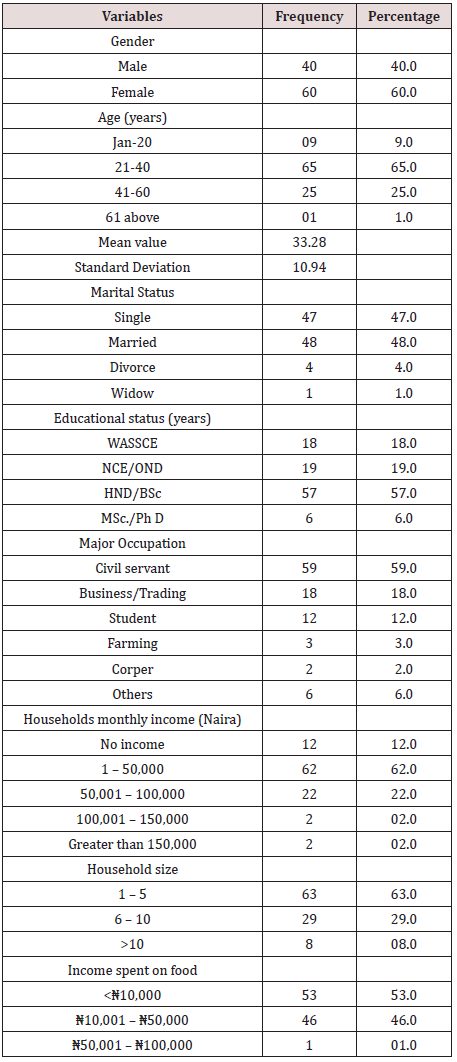
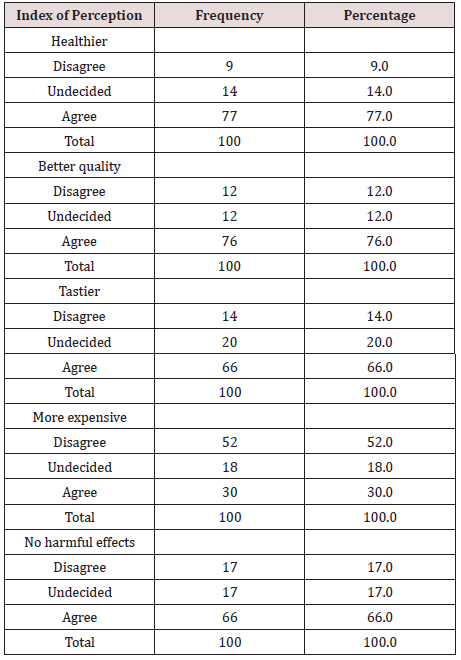
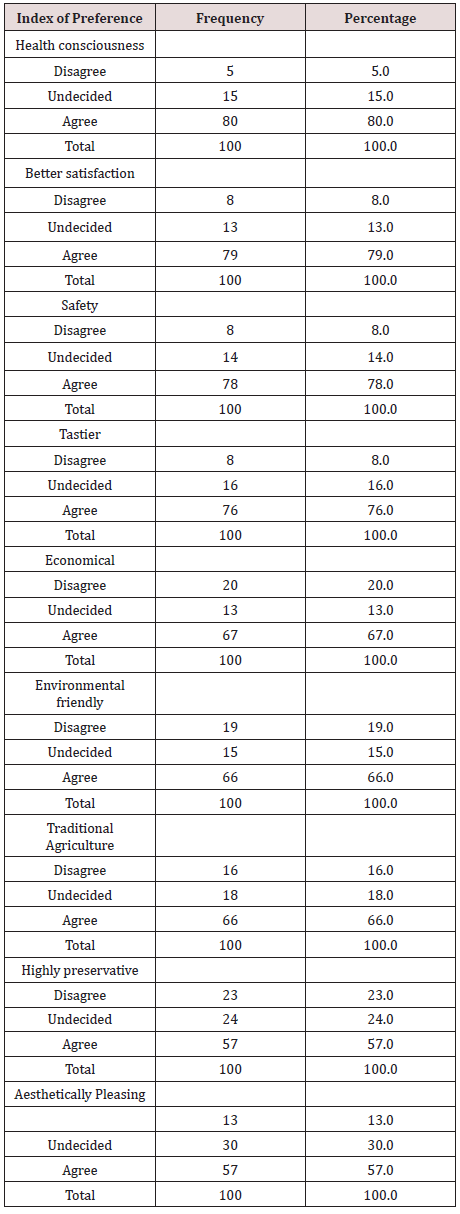
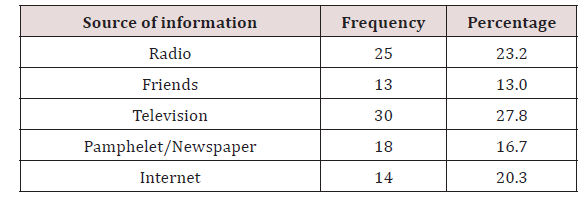

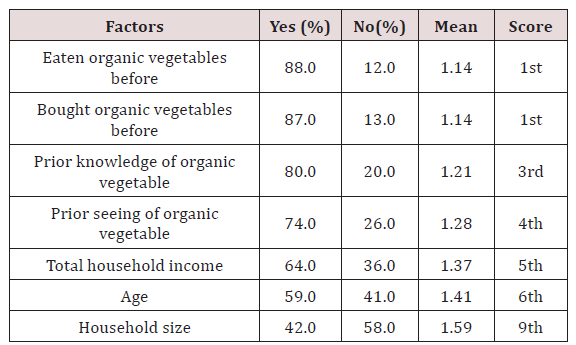
No comments:
Post a Comment